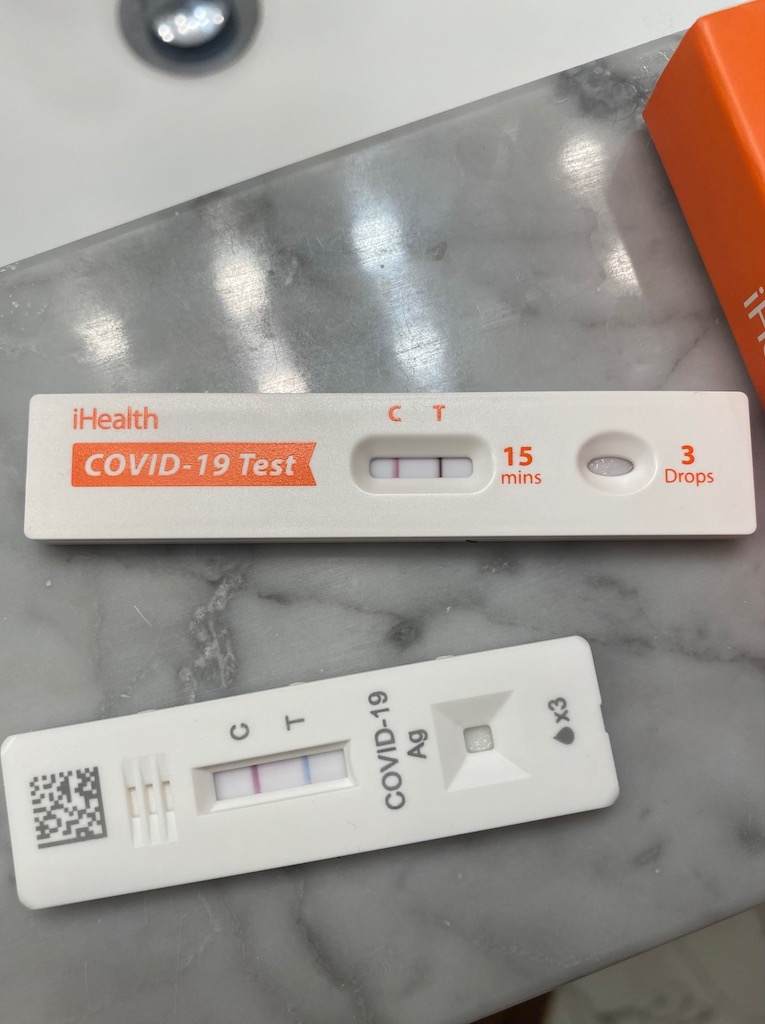WASHINGTON – Maryland is seeing a surge in COVID cases that mirrors national trends — and experts say it might continue as the state heads into respiratory disease season and as some residents take lax approaches to preventive measures.
The rate of reported COVID-19 cases in the state saw an uptick during September. Sept. 11 saw the highest recorded case rate last month in Maryland, with 6.64 cases per 100,000 people. Case rates have seen a gradual decline since then, but are still sitting above rates during the summer months.
Before last month, the last time that case rates in the state were above 5 cases per 100,000 residents was in March.
Data from the Maryland Department of Health shows that in September 2022, reported COVID-19 infection rates ranged from 12.08 to 17.06 cases per 100,000 residents. Case rates last month ranged from 4.54 to 6.64 cases per 100,000 people, meaning this year’s numbers look better than last year’s.
But Kate McPhaul, an associate research professor in the University of Maryland’s School of Public Health, said the prevalence of testing is lower now than earlier in the pandemic.
Amid the September surge, President Joe Biden’s administration also announced on Sept. 20 that it is appropriating $600 million to companies that produce COVID-19 testing kits to boost the number of tests manufactured in the nation.
The same day, the administration announced that all households in the country can request four free rapid-testing kits through covid.gov/tests. Free COVID-19 tests previously were available via mail from January 2022 until June of this year.
McPhaul warned that despite a resurgence in testing options, current case numbers may not be entirely accurate because fewer people overall are testing and milder cases have likely not all been reported to the state.
However, there’s a general indication that there has been a surge in recent weeks — including through anecdotal evidence, she said.
This fall surge indicates that COVID-19 could be showing signs of spiking seasonally, McPhaul said, but since it is still a relatively new virus, predicting its behavior is difficult.
In line with the surge in cases, hospitalizations and deaths in Maryland have also increased between the start of summer and now, state health department data shows.
These upticks will likely continue in the coming months, according to Kristen Coleman, an assistant professor in the University of Maryland’s public health school.
Coleman said that reinstating preventive measures like masking and air filtration in public spaces, classrooms and more could help keep the surge at bay.
“I expect that [cases] will continue to climb,” Coleman said. “This fall, because of the uptick, I do see more people masking, but certainly not as many as in the beginning of the pandemic.”
A poll by the business intelligence company Morning Consult in May showed that only 24% of all United States adults were “very” concerned about COVID-19. It’s a number that’s steadily declined since the start of the pandemic. In April 2020, comparatively, 65% of adults told Morning Consult they were “very concerned.”
For McPhaul, this decline in concern is evident through a drop in people masking and seeking out the most recent booster dose of the COVID-19 vaccine.
“People want the pandemic to be over with and to me right now, it seems like there's a bit of a disconnect with the COVID rate going up. A lot of the behaviors that mitigate getting sick kind of don't seem to be happening,” McPhaul said.
The U.S. Food and Drug Administration in mid-September approved an updated COVID-19 booster vaccine that targets newer variants that have been fueling a rise in cases. But this booster has not been widely administered, McPhaul said.
Only 24% of Maryland’s population has received an updated bivalent booster vaccine at all, according to the Centers for Disease Control. Additional tracking shows that few residents in the region and nationally have received the most recent booster dose.
In addition to the case surge in Maryland, Virginia and the District of Columbia also are seeing similar trends and similar attitudes when it comes to masking and vaccines.
Between the beginning of August and mid-September, the Virginia Department of Health recorded an uptick in reported COVID-19 cases and hospitalizations for COVID-19. In all except four of Virginia’s 139 counties and independent cities, fewer than 25% of residents have received all the CDC-recommended doses of the COVID-19 vaccine, according to data from the department.
Numbers across the past month in Washington, D.C., also align with national trends. The rate of weekly reported cases per 100,000 city residents saw a steady uptick from 11.7 cases on Aug. 19 to 33.6 cases on Sept. 9, D.C. Health data shows.
As cases may continue rising in the region, McPhaul encouraged area residents to think about preventive measures in their communities, including masking around high-risk individuals and getting vaccinated against COVID-19 and other respiratory diseases like the flu and RSV (respiratory syncytial virus).
“I think people just need to get that person in their head that they're protecting,” she said. “All of that stuff that we were promoting during the pandemic can continue to be utilized in the prevention of all of the airborne infections.”

